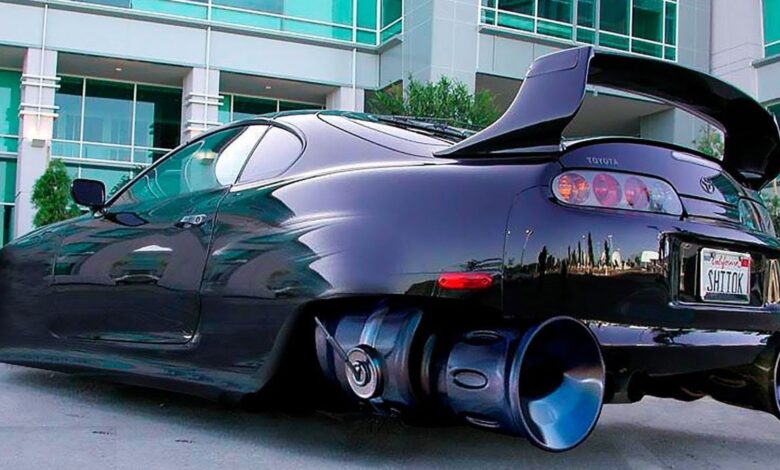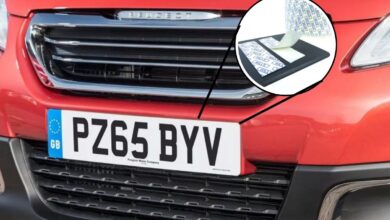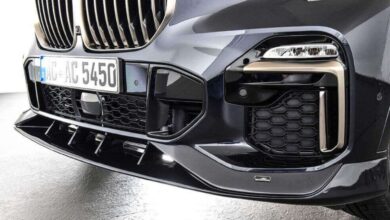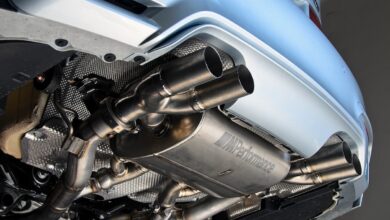Illegal Car Modifications That Could Fail Your MOT

Here are some common illegal car modifications that could fail your MOT Class 7:
Tinted Windows:
If the tinting on your windows is too dark, it can be considered illegal and can result in an MOT failure.
Non-standard Wheels and Tires:
Fitting non-standard wheels and tires that are not recommended for your vehicle can result in an MOT failure.
Non-standard Headlights:
Fitting non-standard headlights, such as HID or LED lights that are not road legal, can result in an MOT failure.
Exhaust Modifications:
Fitting exhaust systems that is too loud or modifies emissions can result in an MOT failure.
Suspension Modifications:
Fitting non-standard suspension that lowers or raises the vehicle too much can result in an MOT failure.
Engine Modifications:
Fitting non-standard engine modifications, such as engine swaps or modifications that increase horsepower beyond the manufacturer’s specifications, can result in an MOT failure.
Brake Modifications:
Fitting non-standard brake components or modifying the brake system can result in an MOT failure. It’s important to note that any car modifications should be made with care and consideration for safety and legal requirements. Before making any car modifications, be sure to check the regulations and seek professional advice if necessary.
Why is MOT Necessary in the UK?
 The MOT (Ministry of Transport) test is an annual inspection of vehicles in the United Kingdom that is required by law for most vehicles that are over three years old. The MOT test is designed to ensure that vehicles meet a minimum safety and environmental standards.
The MOT (Ministry of Transport) test is an annual inspection of vehicles in the United Kingdom that is required by law for most vehicles that are over three years old. The MOT test is designed to ensure that vehicles meet a minimum safety and environmental standards.
The main purpose of the MOT test is to help ensure that vehicles on UK roads are safe and roadworthy. This is achieved by checking key components and systems of the vehicle, such as brakes, suspension, steering, lights, exhaust emissions, and tires. The test is designed to identify any defects or issues that could affect the safety or environmental performance of the vehicle.
The MOT test is carried out by trained and certified testers who work at authorized testing stations throughout the UK. If a vehicle passes the test, it will receive an MOT certificate that is valid for one year from the date of the test. If the vehicle fails the test, the owner will be required to have the necessary repairs made and then have the vehicle retested. The MOT test is an important part of road safety in the UK and helps to ensure that vehicles on the road are safe, reliable, and environmentally friendly.
How MOT Process Works?
MOT stands for “Ministry of Transport” and refers to the annual vehicle safety inspection that is required in many countries, including the UK. The MOT test ensures that vehicles meet certain minimum safety and environmental standards before they can be legally driven on public roads.
Booking the MOT:
Vehicle owners must book an MOT test with an approved testing center. They should do this at least a month before the current MOT certificate expires.
Preparing for the MOT:
Vehicle owners should ensure that their vehicles are in a roadworthy condition before the test. This may involve checking the lights, brakes, tires, and other important components. They should also remove any personal items from the vehicle.
Taking the MOT:
At the testing center, the vehicle will be inspected by a qualified MOT tester. The test usually takes around 45 minutes and covers a range of safety and environmental checks.
MOT results:
If the vehicle passes the MOT, the owner will receive an MOT certificate valid for one year. If the vehicle fails, the owner will receive a list of the defects that need to be repaired before the vehicle can be retested.
Retesting:
If the vehicle fails the MOT, the owner must have the necessary repairs done and then arrange for a retest within 10 working days. If the vehicle is retested within this period, the retest is usually free.
It’s important to note that the MOT test does not cover the general mechanical condition of the vehicle, and passing the MOT does not guarantee that the vehicle is in good working order. Furthermore, vehicle owners should continue to have their vehicles regularly serviced to ensure their ongoing safety and reliability.
What Comes in Illegal Modification of Vehicles?
Illegal modification of vehicles involves making changes to a vehicle that are not allowed by law or regulations, and can include a wide range of car modifications. Here are some examples of car modifications that may be illegal:
Changing the Engine:
Swapping the engine for a more powerful one, or modifying the engine to increase its power, can be illegal if the new engine does not meet emissions standards or other legal requirements.
Removing or Modifying the Exhaust System:
Removing the catalytic converter or installing an aftermarket exhaust system that does not meet emissions standards can be illegal.
Installing Illegal Lights:
Installing lights that are not approved for road use, or modifying existing lights to make them brighter or colored, can be illegal.
Altering the Suspension:
Lowering the vehicle’s suspension beyond legal limits, or installing illegal car modifications such as “airbags” or hydraulic systems, can be illegal.
Using Illegal Tires:
Tires that do not meet legal requirements for tread depth or speed rating can be illegal.
Installing Illegal Body Kits:
Installing body kits or car modifications that change the vehicle’s shape or dimensions beyond legal limits can be illegal.
Removing Safety Features:
Removing safety features such as airbags, seat belts, or anti-lock brakes can be illegal. Illegal car modifications can not only lead to fines or penalties, but they can also be dangerous and potentially deadly. Modified vehicles that are not roadworthy can cause accidents, injury or fatalities. Additionally, It’s important to consult with a certified mechanic or automotive specialist. To ensure any car modifications made to a vehicle are legal and safe.



